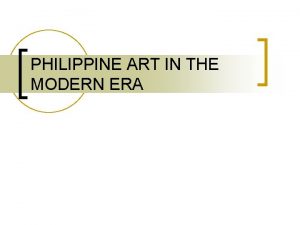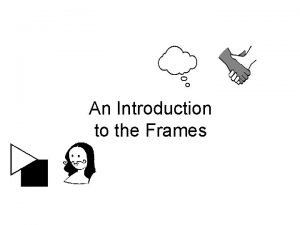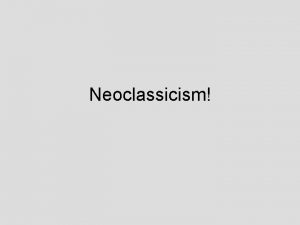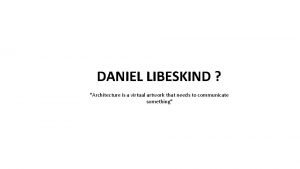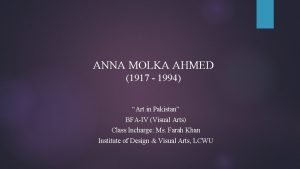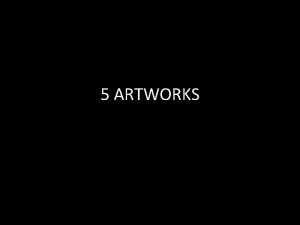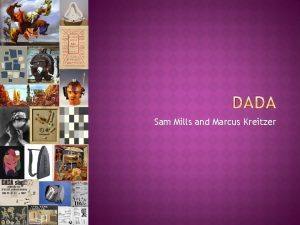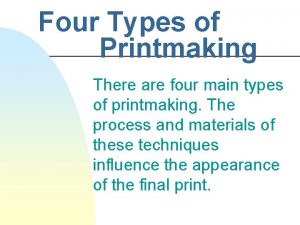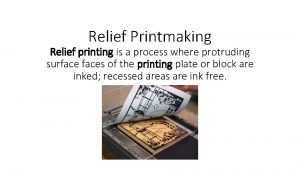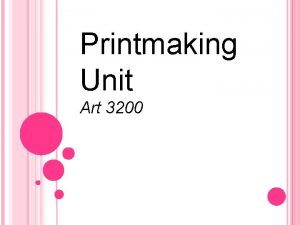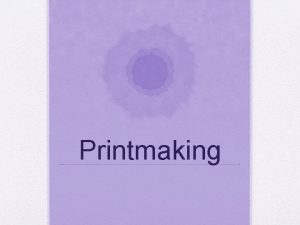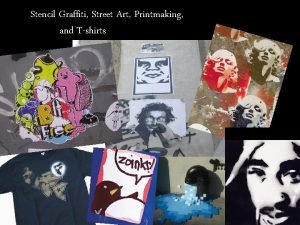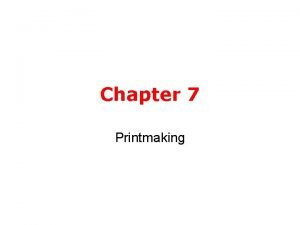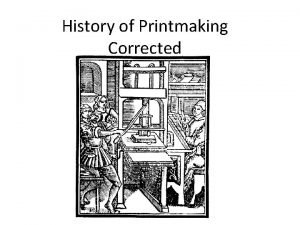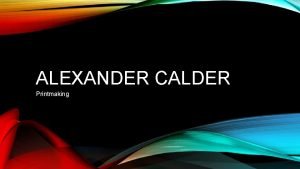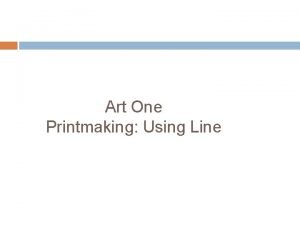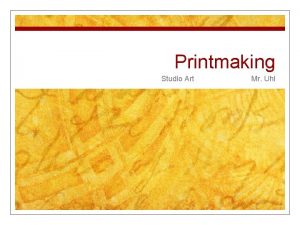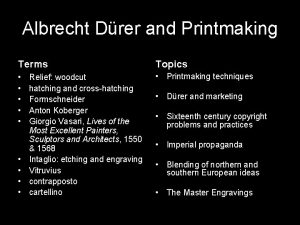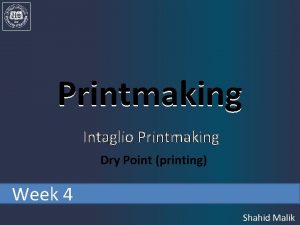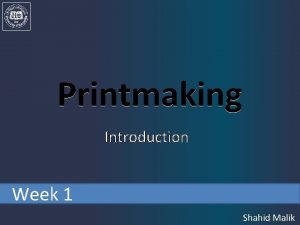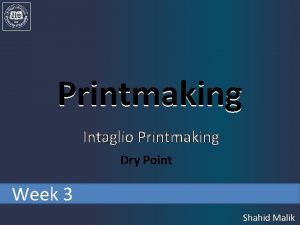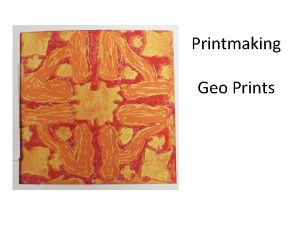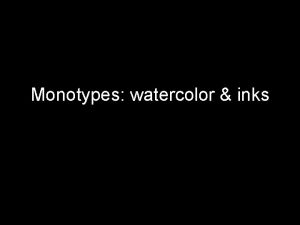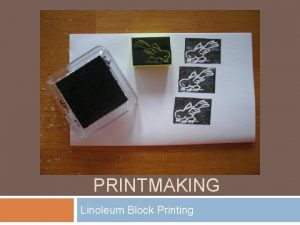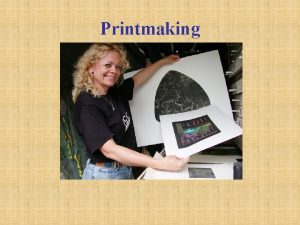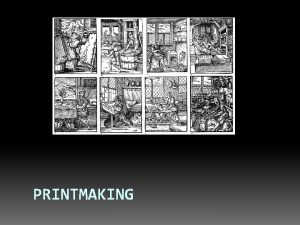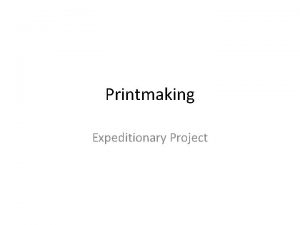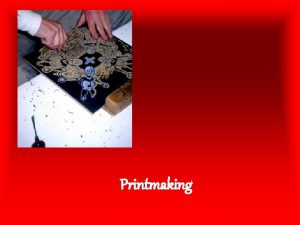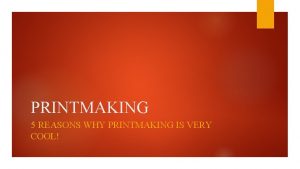Printmaking Printmaking is the process of making artworks






















- Slides: 22

Printmaking

• Printmaking is the process of making artworks by printing, normally on paper. • The process is capable of producing multiple copies of the same image, which is called a print. • Each copy is known as an impression. Each print is considered an original work of art, not a copy. • Works printed from a single plate create an edition, in modern times usually each signed and numbered to form a limited edition.

• Chinese artist were printing with carved wooden blocks over one thousand years ago. • The process was first used to repeat designs on textiles.

• Later it was applied to paper. one of the earliest forms of block printing was in the manufacture of paper money.

• Printmaking did not develop in Europe until the 15 th century, in time to meet the growing demands for inexpensive religious pictures and playing cards. • Later it was used to provide illustrations for books produced with moveable type.

• This printing process, invented by a German printer named Johannes Gutenberg, he made it possible to print different pages of a book by using the same metal type over and over again. • Eventually artist began to recognize the value of printmaking applied to the production of fine art.

• This led to a variety of printmaking processes ranging from those that are relatively simple to others that are more complicated. • The four basic printmaking methods are – relief, – Intaglio (etching) – lithography – screen printing. http: //www. moma. org/exhibitions/2001/whatisaprint/flash. html

• Printing with carved wooden blocks originated in China and spread to Japan where, in the seventeenth century, it became a highly developed art form. • At first, oriental prints consisted of inked outlines that were later filled in with colored by Katsushika Hokusai The Kirifuri hand. Waterfall at Mt. Kurokami, Shimozuke Province.

Intaglio A printing process that is exactly the reverse of relief printing is intaglio. The name comes from the Italian word meaning “to cut into”

• Intaglio is a process in which ink is forced to fill lines cut into a metal surface. • The lines of a design are created by one of two methods: etching or engraving. Edward Hopper, Night Shadows, 1921, etching.

– The remaining ground is then removed, the plate inked, the unetched surface is cleaned, and damp paper is pressed onto the plate with a press. – This forces the paper into the inked grooves, transferring the image. Albrecht Durer, St. Eustace 1501, engraving.

Lithography • There is a printing process based on the principle that grease and water do not mix.

• Among the many artist attracted to the direct drawing method of lithography was the Mexican painter, Jose’ Clemente Orozco. • He used this printing method to create the powerful image of a monk attending a starving Indian. Jose’ Orozco, The Franciscan and the Indian, 1926, Lithograph

Screen Printing • Screen Printing is a more recent printmaking process. – Paint is forced through a screen onto paper or fabric.

A screen print that have been handmade by an artist is called a serigraph. Edward Ruscha, Standard Station, 1966, serigraph

Assignment • You are to draw a picture in your sketchbook about cultural /heritage or self-portrait. • The section must be able to fill up a 4*6 area. • On your sketch you need to plan your color scheme using a minimum of 3 colors. White does not count as a color. • If you use words the words must be written as a mirror image. • Once I o. k. your drawing you will draw your image onto the soft block linoleum.

• Then draw your image on the back of the linoleum. • Once you have redrawn your picture you will then be ready to start to carve. • I will demonstrate to you how to carve your linoleum. • Please be extra careful. • Tools are very sharp and have been known to cut students. • If any one miss-uses the tools I will take them away from the whole class.

• Make sure your name is on your linoleum. • Before you start to cut, plan out what you will be cutting out. – You will cut light to dark. • White • Yellow • Decide what you are going to do with your print.




 Modern period art in the philippines
Modern period art in the philippines Postmodern frame
Postmodern frame Characteristics of neo classic .
Characteristics of neo classic . Daniel libeskind style
Daniel libeskind style Anna molka ahmed painting style
Anna molka ahmed painting style Stefan sagmeister biography
Stefan sagmeister biography Raoul hausmann artworks
Raoul hausmann artworks What are the types of printmaking
What are the types of printmaking Relief printmaking process
Relief printmaking process Making inferences
Making inferences War making and state making as organized crime
War making and state making as organized crime Hát kết hợp bộ gõ cơ thể
Hát kết hợp bộ gõ cơ thể Ng-html
Ng-html Bổ thể
Bổ thể Tỉ lệ cơ thể trẻ em
Tỉ lệ cơ thể trẻ em Gấu đi như thế nào
Gấu đi như thế nào Tư thế worm breton là gì
Tư thế worm breton là gì Hát lên người ơi alleluia
Hát lên người ơi alleluia Các môn thể thao bắt đầu bằng tiếng nhảy
Các môn thể thao bắt đầu bằng tiếng nhảy Thế nào là hệ số cao nhất
Thế nào là hệ số cao nhất Các châu lục và đại dương trên thế giới
Các châu lục và đại dương trên thế giới Công thức tính thế năng
Công thức tính thế năng Trời xanh đây là của chúng ta thể thơ
Trời xanh đây là của chúng ta thể thơ
